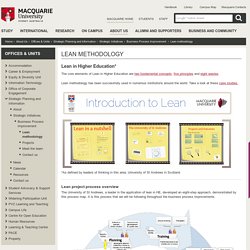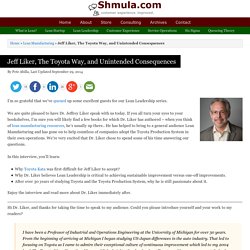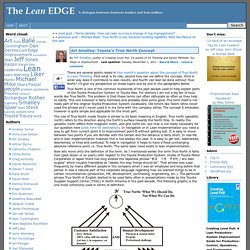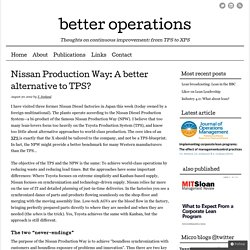

ManagementBriefing_9Ways_Leaders_Actions. Idenk_lean_thinking.pdf. Integris_Roadmap-for-Achieving-Lean-Culture.pdf. Lean_primer.pdf. Getting%20Started%20with%20Value%20Stream%20Mapping.pdf. 2014-11-07-lundbeck-journey-lfi. Public and Private Sector Successes and Examples Using Lean Tools and Processes. Circling-back.pdf. PDCA.pdf. Lean methodology. The core elements of Lean in Higher Education are two fundamental concepts, five principles and eight wastes.

Lean methodology has been successfully used in numerous institutions around the world. Take a look at these case studies. *As defined by leaders of thinking in this area, University of St Andrews in Scotland Lean project process overview The University of St Andrews, a leader in the application of lean in HE, developed an eight-step approach, demonstrated by this process map. Two fundamental concepts Continuous improvement Continuously looking at your work processes and striving to improve them (by, for example, using the Plan-Do-Check-Act improvement cycle).
Respect for peopleRemembering that our staff are our greatest asset. Five principles These principles have come to define lean: maximise VALUE - aim to do work that is value adding and eliminate waste understand work as a PROCESS - all work across the institution is interconnected Eight wastes. Oehmen%202012%20-%20Lean%20Enablers%20-%20LAI%20KEE%20April%2026%20-%20120426%20-%20Handouts.pdf.
IMECS2010_pp1662-1667.pdf. Introduction-to-Lean-Booklet. Introduction-to-Lean-Booklet. MWCCLeanLeadershipVisioningTour-2014Aug-v2.1. PAPER_4(2) FULLTEXT01.pdf. 338.pdf. Schwagerman-Ulmer-A3-Lean-Le.pdf. Constructionkatapaper.pdf. Jeff Liker, The Toyota Way, and Unintended Consequences. I’m so grateful that we’ve queued up some excellent guests for our Lean Leadership series.

We are quite pleased to have Dr. Jeffrey Liker speak with us today. If you all turn your eyes to your bookshelves, I’m sure you will likely find a few books for which Dr. Liker has authored – when you think of lean manufacturing resources, he’s usually up there.. He has helped to bring to a general audience Lean Manufacturing and has gone on to help countless of companies adopt the Toyota Production System in their own operations. In this interview, you’ll learn: Why Toyota Kata was first difficult for Jeff Liker to accept? Enjoy the interview and read more about Dr. Hi Dr. I have been a Professor of Industrial and Operations Engineering at the University of Michigan for over 30 years.
What got you started in your Lean journey? It was the opportunity to join a very large US-Japan auto study when I arrived as an assistant professor at UM. I am not sure that research is the right term. Jeff Liker, The Toyota Way, and Unintended Consequences. 04-20-3-Lean_and_TPS.pdf. Andersson_et_al_140826.pdf. Andersson_et_al_140826.pdf. Kuhlman-Voss_Toyota-Production-System. Diva-portal. Ar14_e. Jeff-Liker.pdf. Art Smalley: Toyota’s True North Concept. There are several points raised in this month’s question about the concept of True North in Lean Thinking.

First what is its role, second how can we define the concept, third in what way does it contribute to lean results, and fourth can lean be done without True North? I’ll give my perspective on these topics one by one in the paragraphs below. True North is one of the common buzzwords of the past decade used to help explain parts of the Toyota Production System or Toyota Way. For starters I am not a big fan of buzz words like True North. The problem is that these terms can often obfuscate as often as they help to clarify. The role of True North inside Toyota is similar to its basic meaning in English. Now lets move onto the definition of the term. In other words in production for example an ideal state would encompass customer satisfaction with zero defects, 100% value added work, lot sizes of 1, and production in sequence and on demand.
Evaluation%20of%20the%20Nissan%20Plant%20Management%20System.pdf. Nissan Production Way. See on Scoop.it - lean manufacturing A look at production behind the scenes at Nissan's Oppama Plant, where everyday the Nissan Juke, Cube, Sylphy and 100%-electric LEAF roll off the lines Michel Baudin's insight: I did visit the Oppama plant(追浜工場), in 1980.

Then it was making the Nissan Leopard for the Japanese market, the company's cars were sold in the US under the Datsun brand, and they used Kanbans, which they called "workplates" to avoid borrowing the vocabulary of archrival "Company T from Aichi Prefecture. " Times have changed. In this three-minute video of an 8-hour process, you catch glimpses of stamping, welding, painting, and assembly. The little we see of the operations is as expected, frome the body welding robots to the "pirate-ship" carts of parts that move along with the line in final assembly and the different types of engines lifted into the car bodies. The plant has a densely-packed, lived-in look. And a hat tip to Dumontis for calling it Oppama Style. AMSC2013_Hu_Jianping_DONGFENG_NISSAN_English.pdf. 567.pdf. POMS_ARC_2014_Finalist_Volvo. The_dos_and_donts_of_implementing_Corporate_dist.pdf. Nissan Production Way: A better alternative to TPS?
I have visited three former Nissan Diesel factories in Japan this week (today owned by a foreign multinational).

The plants operate according to the Nissan Diesel Production System—a bi-product of the famous Nissan Production Way (NPW). I believe that too many lean-lovers focus too heavily on the Toyota Production System (TPS), and know too little about alternative approaches to world-class production. The core idea of an XPS is exactly that the X should be tailored to the company, and not be a TPS-blueprint. In fact, the NPW might provide a better benchmark for many Western manufacturers than the TPS… The objective of the TPS and the NPW is the same: To achieve world-class operations by reducing waste and reducing lead times.
The two “never-endings” The purpose of the Nissan Production Way is to achieve “boundless synchronization with customers and boundless exposure of problems and innovation”. The Lean Edge.